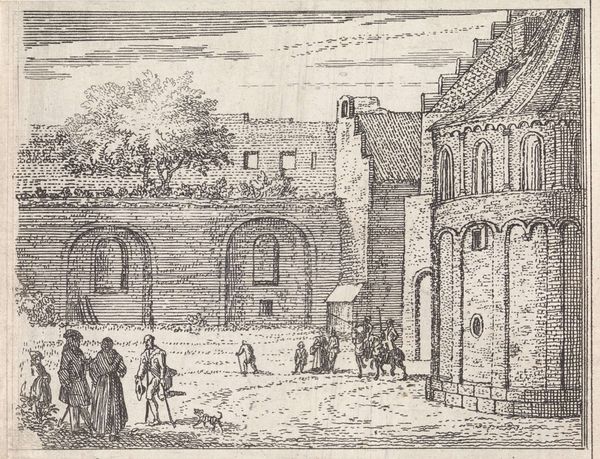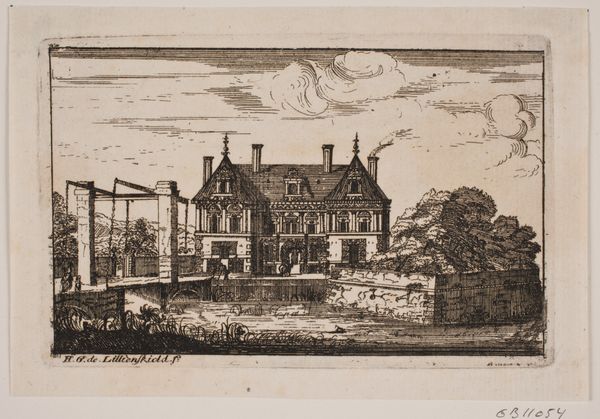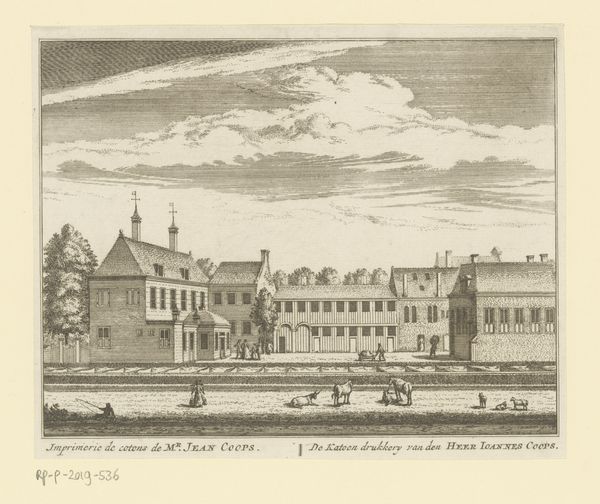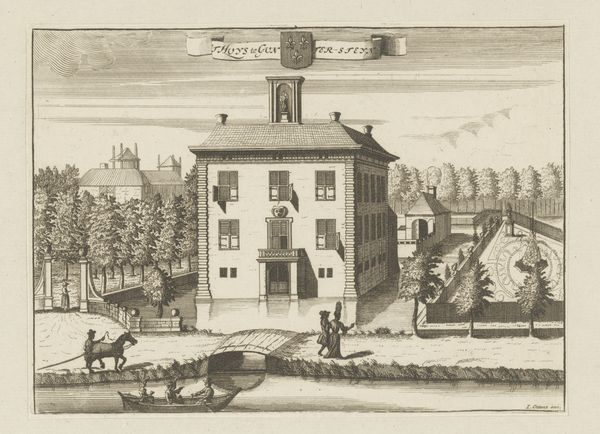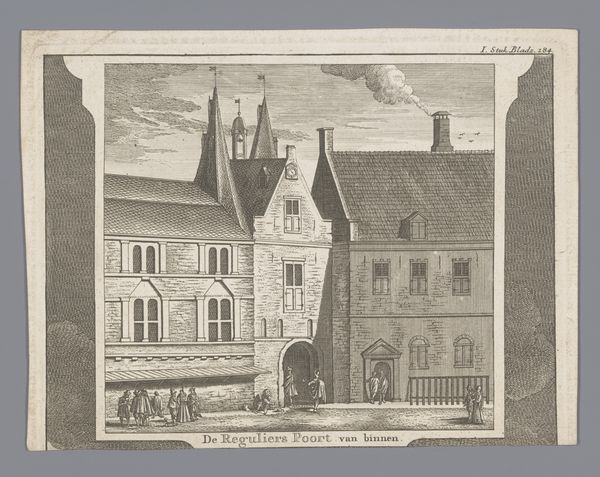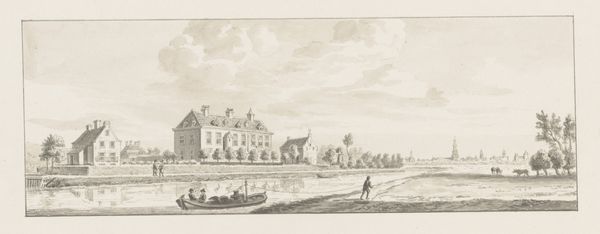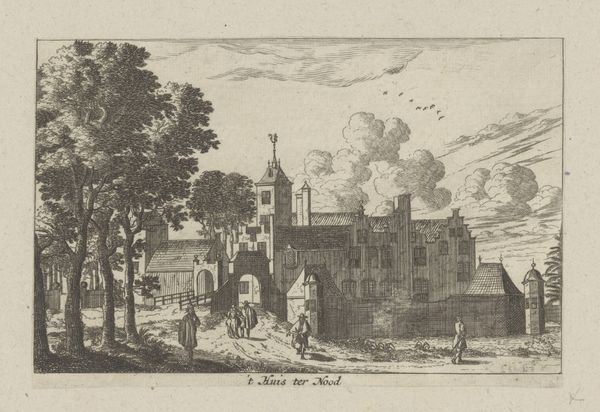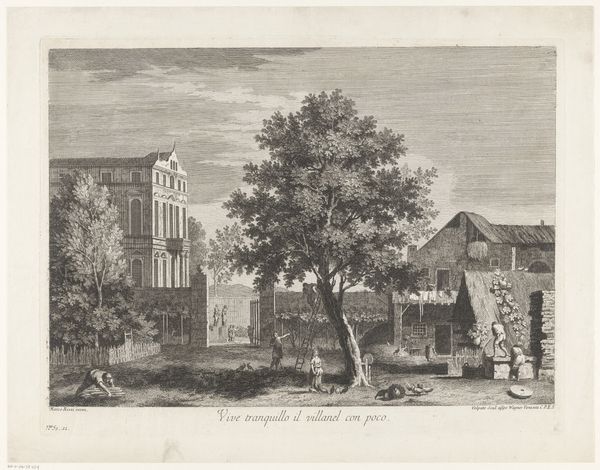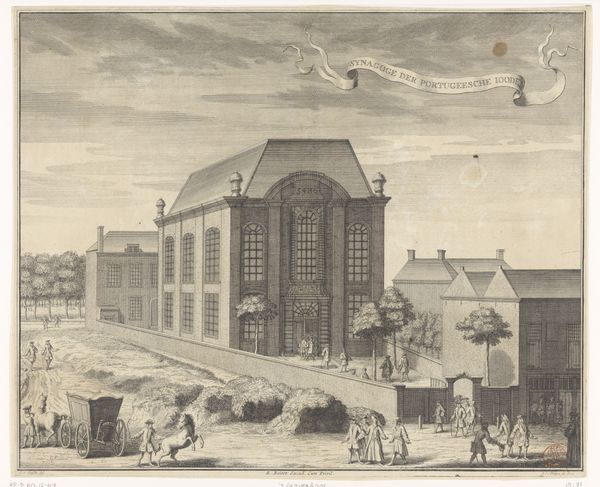
View of the Campidoglio on the Capitoline Hill, with equestrian statue at lower right, from the series 'The Small book of Roman ruins and buildings' (Operum antiquorum romanorum) 1562
0:00
0:00
drawing, print, engraving, architecture
#
drawing
# print
#
landscape
#
geometric
#
horse
#
cityscape
#
history-painting
#
italian-renaissance
#
engraving
#
architecture
#
building
Dimensions: sheet: 6 1/8 x 8 3/8 in. (15.5 x 21.2 cm)
Copyright: Public Domain
Curator: Here we have "View of the Campidoglio on the Capitoline Hill," created by Johannes van Doetecum I in 1562, as part of his series, "The Small book of Roman ruins and buildings." The work combines engraving, drawing, and printmaking techniques. Editor: The precision! I’m immediately struck by the artist’s command of line, particularly in rendering architectural details. It’s almost clinical, but the equestrian statue adds a certain dynamism. Curator: Indeed. Doetecum was known for his technical skill in printmaking, especially his capacity to meticulously capture the textures of buildings and public spaces. This print highlights the Capitoline Hill, Rome's most important of its seven hills, offering not just a visual record, but a commentary on power through architecture. Notice the materials: the marble, the stone... they all suggest permanence. Editor: And the equestrian statue is rich with meaning. The horse often symbolizes power and status. It also represents conquest and dominance, values very dear to that epoch, which would reinforce the authority residing in those buildings looming in the background. Curator: Exactly. Let’s consider how Doetecum may have wanted to speak to labor involved in creating such impressive public art. Who built this square? What was it like for the anonymous workers? It forces us to reflect on the unseen hands shaping our visual landscape. Editor: Good point, it does make me consider the hierarchy embedded within the scene. Also note how the figures, tiny in comparison, give a sense of scale, but perhaps also symbolize humanity's place relative to larger powers at play in the city? It speaks to larger ideas about control, societal order, and what symbols are valued by Rome. Curator: Absolutely. These prints would have been reproduced widely and circulated as documentation to artisans to spread these architectural techniques throughout the 16th century. Editor: I leave here pondering how symbols morph and endure, but also on the amount of work in rendering history. Curator: Me too. Considering what a single print meant back then and means to us now in 2024 is quite thought provoking.
Comments
No comments
Be the first to comment and join the conversation on the ultimate creative platform.
